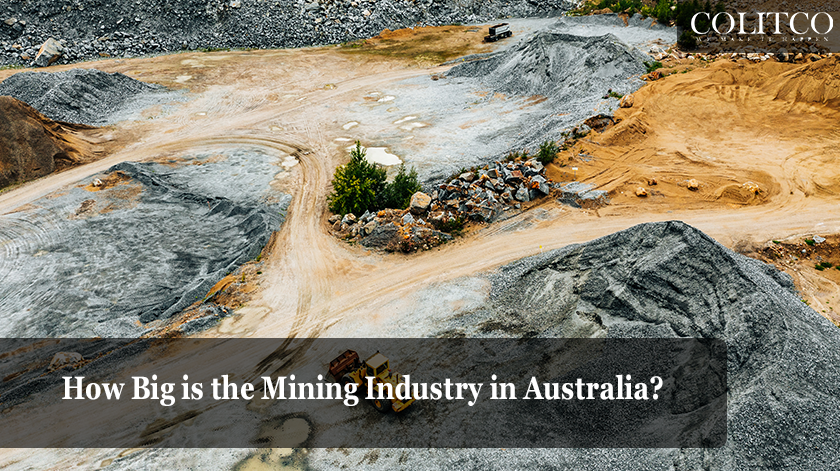Coal, iron ore, and gold mining make up most of the mining industry, one of the nation’s biggest industries. Australia’s mining industry plays a significant role in the nation’s economy, significantly increasing GDP, exports, and job possibilities. The Australian mining sector affects government revenue, technical advancement, regional development, and direct financial contributions. Australia is one of the leading producers of several minerals in the world. It is the world’s largest producer of iron ore, bauxite, and lithium and produces a substantial deal of gold, coal, copper, and zinc.

Australia, for example, is the world’s largest iron ore producer, with over 900 million tonnes produced in 2021. With an estimated gross value added of hundreds of billions of Australian dollars, the mining industry is one of the largest in the country. The cross-industry standard method for data mining techniques was created in 1999 to standardise data mining procedures across sectors. Over time, it has become the most generally used strategy for projects, including analytics, data science, and data mining.
Over 250,000 people are directly employed in the mining industry in Australia. These jobs show the diverse professional options available, from geologists to engineers. States known for their mining sector, such as Western Australia, Queensland, and New South Wales, depend on it for employment opportunities, economic development, and the support of local companies and communities. 60% of Australia’s export value comes from its mining sector, which mainly exports iron ore, coal, natural gas, gold, and aluminium, with China being the primary market.
What is the cross-industry standard process for data mining?
The Cross-Industry Standard Process for Data Mining, or CRISP-DM, is a widely used framework for leading data mining initiatives. Several European businesses created it in the late 1990s. The CRISP-DM structured approach outlines the processes and roles for effectively executing data mining and analytics projects. Due to its neutrality towards specific industries, the approach can be applied in various contexts and professional settings. By following this structured strategy, organisations can enhance their ability to make better decisions, gain more valuable insights from data, and eventually achieve their business objectives.
The Cross-Industry Standard Process for Data Mining has six phases that includes –
- Determining and outlining the essential company goals and specifications
- Gathering, analysing, and confirming data to guarantee its accuracy and applicability.
- Getting the data prepared to undergo analysis
- Utilising a range of modelling approaches to find trends and create prediction models
- Examine the model’s functionality and the outcomes.
- Implement the model in a real-world setting to make it actionable.
The mining sector can significantly benefit from the application of the cross-industry standard process for data mining framework, which can improve operational efficiency, cost savings, and strategic decision-making by enabling the extraction of actionable insights from data. Mining businesses can use data mining techniques to solve complicated problems, spur innovation, and accomplish their goals more precisely and successfully by adopting this structured approach.
Conclusion
Australia’s mining industry is well-positioned to sustain its vital role in the economy, promoting growth, innovation, and sustainable development as the world’s demand for minerals rises.
Understanding the size and extent of the mining industry provides essential insights into one of the most critical sectors of the Australian economy, whether you’re an investor, industry expert, or just interested in the country’s economic environment. Australia’s mining sector has a bright future because of continuous innovations and investments that will keep it at the forefront of the world’s mineral output and environmentally friendly practices.
The Content, including but not limited to any articles, news, quotes, information, data, text, reports, ratings, opinions, images, photos, graphics, graphs, charts, animations, and video (Content), is a service of COLITCO LLP and is available for personal and non-commercial use only. The principal purpose of the Content is to educate and inform. The Content does not contain or imply any recommendation or opinion intended to influence your financial decisions and must not be relied upon by you as such. Some of the Content on this website may be sponsored/non-sponsored, as applicable, but is not a solicitation or recommendation to buy, sell or hold the stocks of the company(s) or engage in any investment activity under discussion. Colitco LLP is neither licensed nor qualified to provide investment advice through this platform. Users should inquire about any investments, and Colitco LLP strongly suggests the users seek advice from a financial adviser, stockbroker, or another professional (including taxation and legal advice), as necessary. Colitco, at this moment, disclaims any liabilities to any user for any direct, indirect, implied, punitive, special, incidental, or other consequential damages arising from any use of the Content on this website, which is provided without warranties. The views expressed in the Content by the guests, if any, are their own and do not necessarily represent the views or opinions of Colitco LLP. Some images/music used on this website are copyrighted to their respective owner(s). Colitco LLP does not claim ownership of any pictures displayed/music used on this website unless stated otherwise. The images/music that may be used on this website are taken from various sources on the internet, including paid subscriptions, or are believed to be in the public domain. We have used reasonable efforts to accredit the head wherever it was indicated as or found to be necessary.











